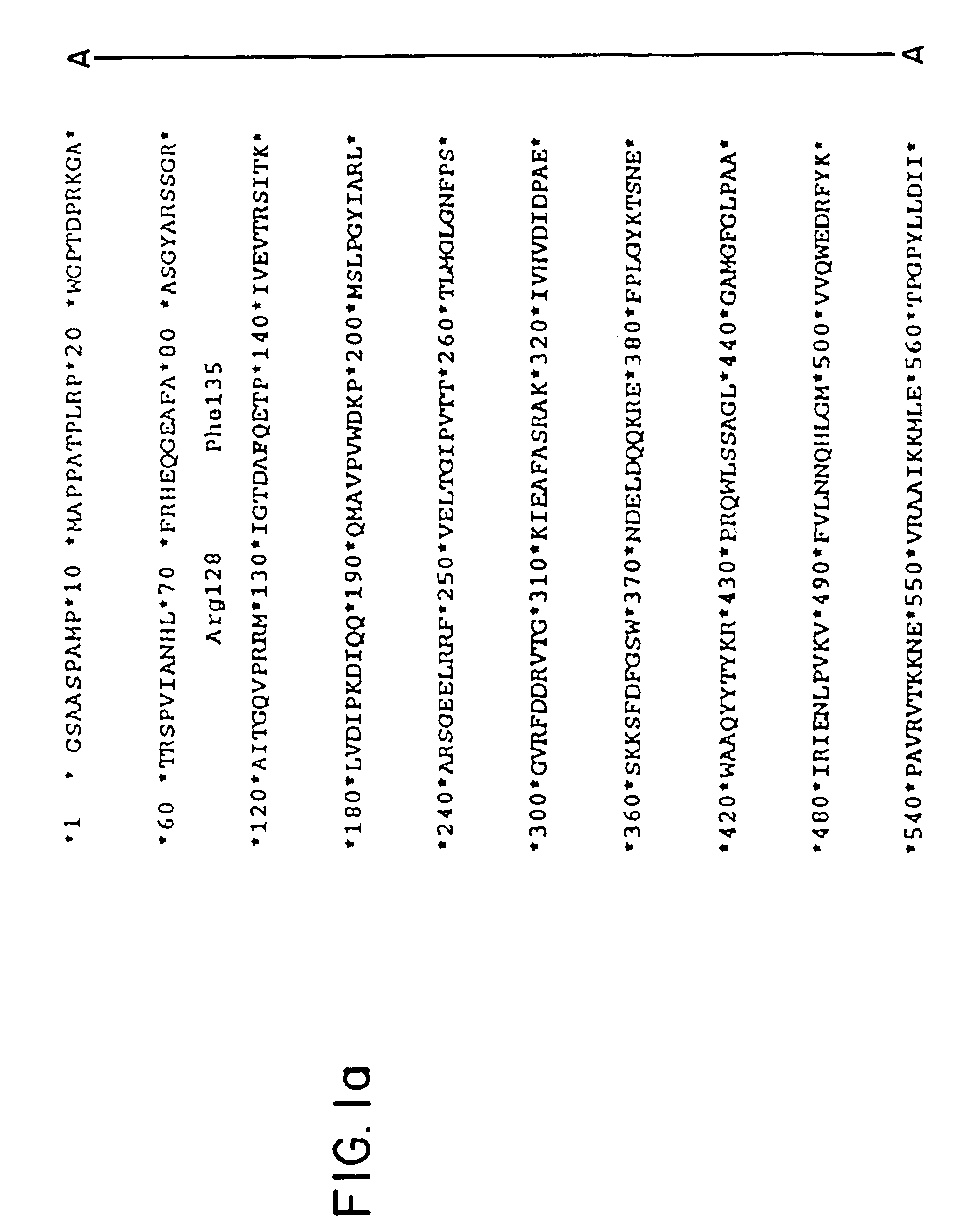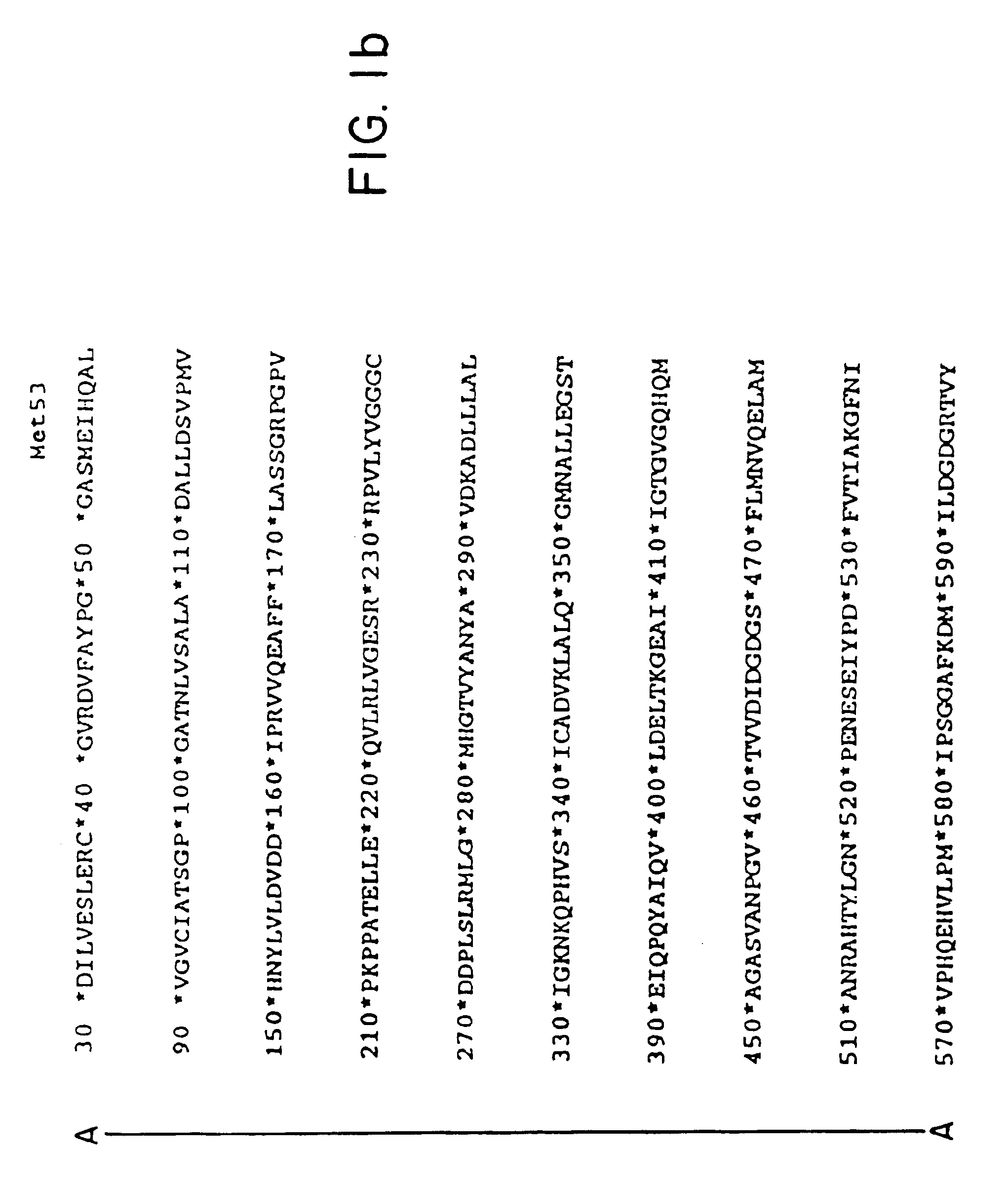Structure-based designed herbicide resistant products
- Summary
- Abstract
- Description
- Claims
- Application Information
AI Technical Summary
Benefits of technology
Problems solved by technology
Method used
Image
Examples
example 1
Design of Herbicide-Resistant AHAS Variants
[0188]Residues located close to the proposed herbicide binding site of the model described in detail above were selected for mutagenesis in order to design an active AHAS polypeptide with decreased herbicide binding capacity. Each site at the surface of the pocket was considered in terms of potential interactions with other residues in the pocket, as well as with cofactors and herbicides. For example, addition of positively charged residue(s) is expected to interfere with the charge distribution within the binding site, resulting in a loss in affinity of binding of a negatively-charged herbicide.
[0189]Three residues were identified as most useful targets for mutagenesis:
[0190](1) F135 was believed to interact with both the isoalloxazine ring of FAD and with the aromatic group of the herbicides. In accordance with the strategy of introducing more charged residues into the binding pocket, this residue was changed to arginine.
[0191](2) M53 con...
example 2
Site-directed Mutagenesis of AHAS to Produce Herbicide-resistant Variants
[0193]The Arabidopsis AHAS gene was inserted in-frame to the 3′ end of the coding region of the glutathione S-transferase gene in the pGEX-2T vector (Pharmacia). Construction of the vector in this manner maintained the six amino acid thrombin recognition sequence at the junction of the expressed glutathione-S-transferase (GST) / AHAS fusion protein. Thrombin digestion of the expressed fusion protein results in an AHAS protein with an N-terminal starting position at the end of the transit peptide at a putative transit peptide processing site, with a residual N-terminal glycine derived from the thrombin recognition site. The final amino terminus of the cleaved AHAS protein consists of Gly-Ser-Ser-Ile-Ser. Site-directed mutations were introduced into the AHAS gene in this vector.
[0194]Site-directed mutations were constructed according to the PCR method of Higuchi (Recombinant PCR. In M A Innis, et al. PCR Protocols:...
example 3
Expression and Purification of AHAS Variants
[0195]A. Methods
[0196]E. Coli (DH5α) cells transformed with the pGEX-2T vector containing either the maize wild type AHAS gene (vector designation pAC751), the Arabidopsis Ser653Asn mutant, or the Arabidopsis Ile401Phe mutant were grown overnight in LB broth containing 50 μg / mL ampicillin. The overnight culture of E. coli was diluted 1:10 in 1 L LB, 50 μg / mL ampicillin, and 0.1% v / v antifoam A. The culture was incubated at 37° C. with shaking until the OD600 reached approximately 0.8. Isopropylthiogalactose (IPTG) was added to a final concentration of 1 mM and the culture was incubated for 3 more hours.
[0197]Cells were harvested by centrifugation at 8,670×g for 10 minutes in a JA-10 rotor and resuspended in {fraction (1 / 100)}th of the original culture volume in MTPBS (16 mM Na2HPO4, 4 mM NaH2PO4, 150 mM NaCl, pH 7.3). Triton X-100 and lysozyme were added to a final concentration of 1% v / v and 100 μg / mL, respectively. Cells were incubated a...
PUM
| Property | Measurement | Unit |
|---|---|---|
| Fraction | aaaaa | aaaaa |
| Fraction | aaaaa | aaaaa |
| Fraction | aaaaa | aaaaa |
Abstract
Description
Claims
Application Information
 Login to View More
Login to View More - R&D
- Intellectual Property
- Life Sciences
- Materials
- Tech Scout
- Unparalleled Data Quality
- Higher Quality Content
- 60% Fewer Hallucinations
Browse by: Latest US Patents, China's latest patents, Technical Efficacy Thesaurus, Application Domain, Technology Topic, Popular Technical Reports.
© 2025 PatSnap. All rights reserved.Legal|Privacy policy|Modern Slavery Act Transparency Statement|Sitemap|About US| Contact US: help@patsnap.com



